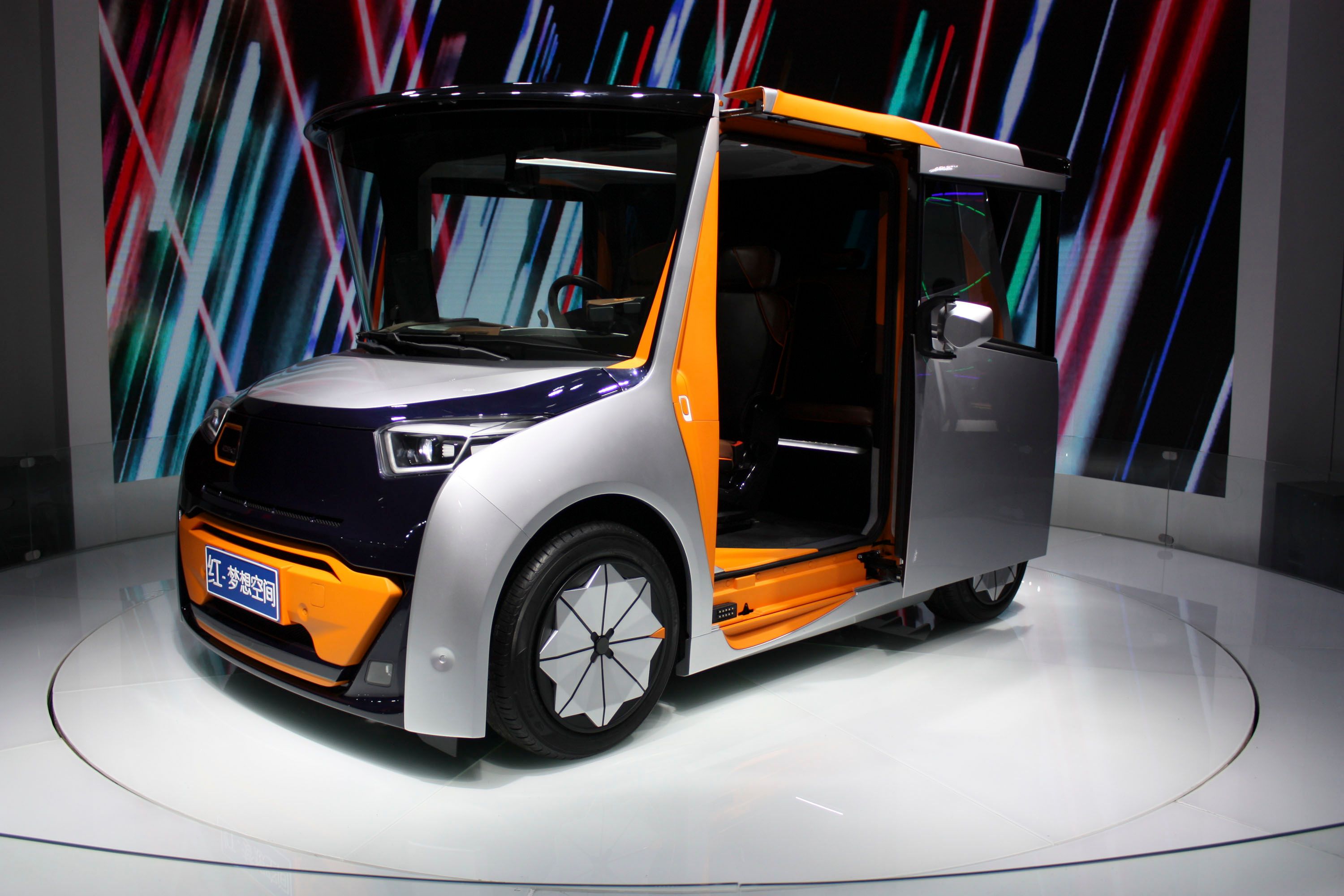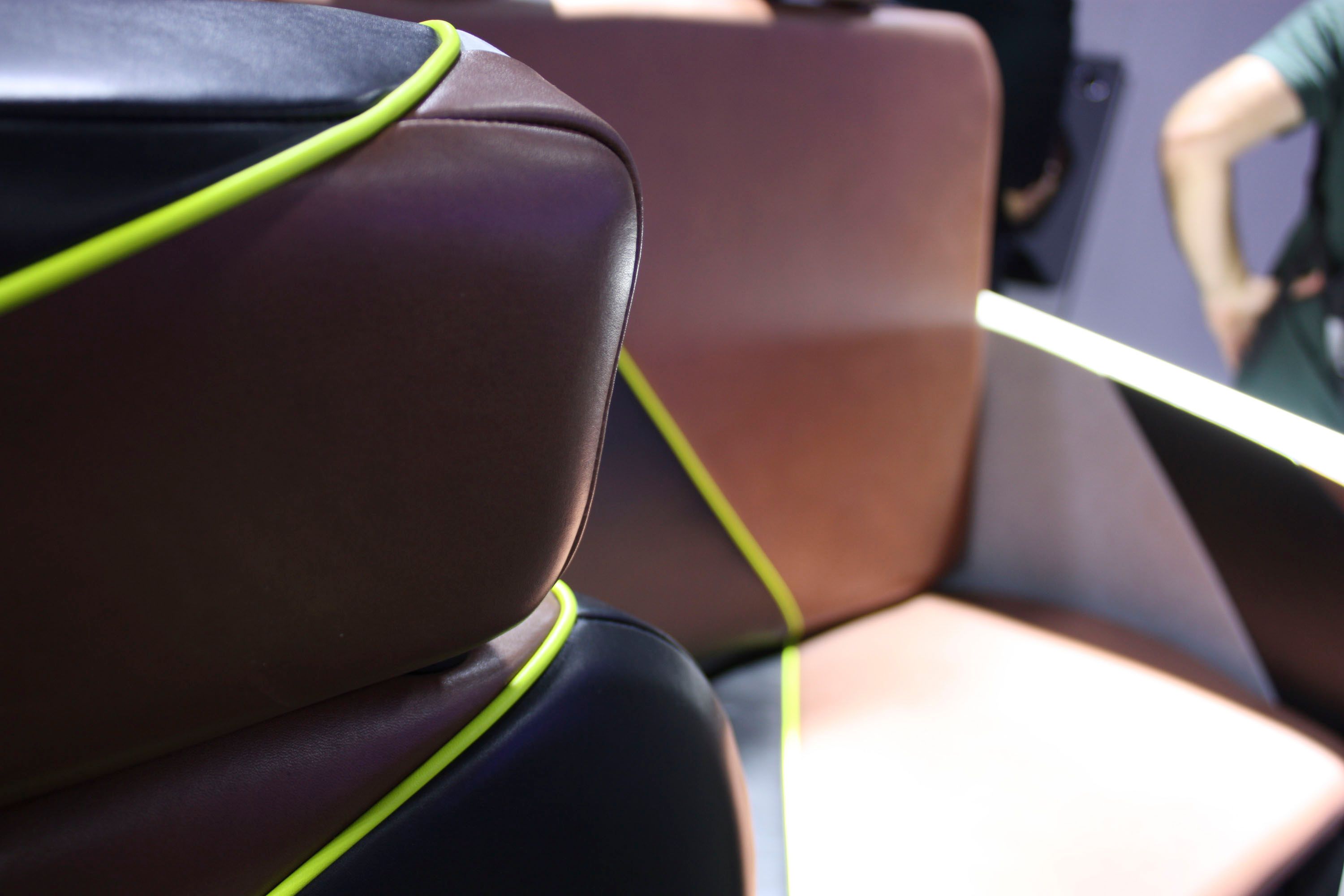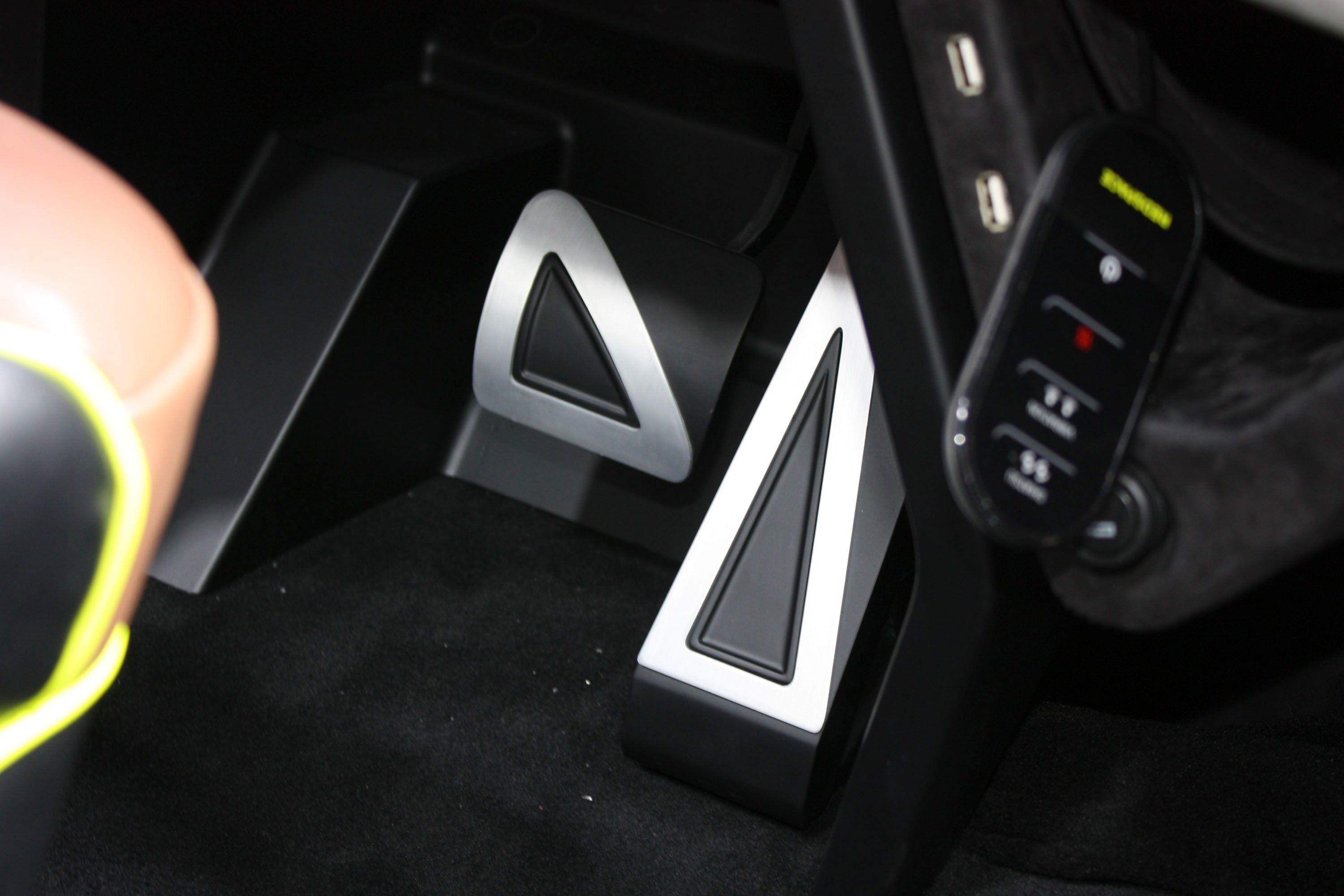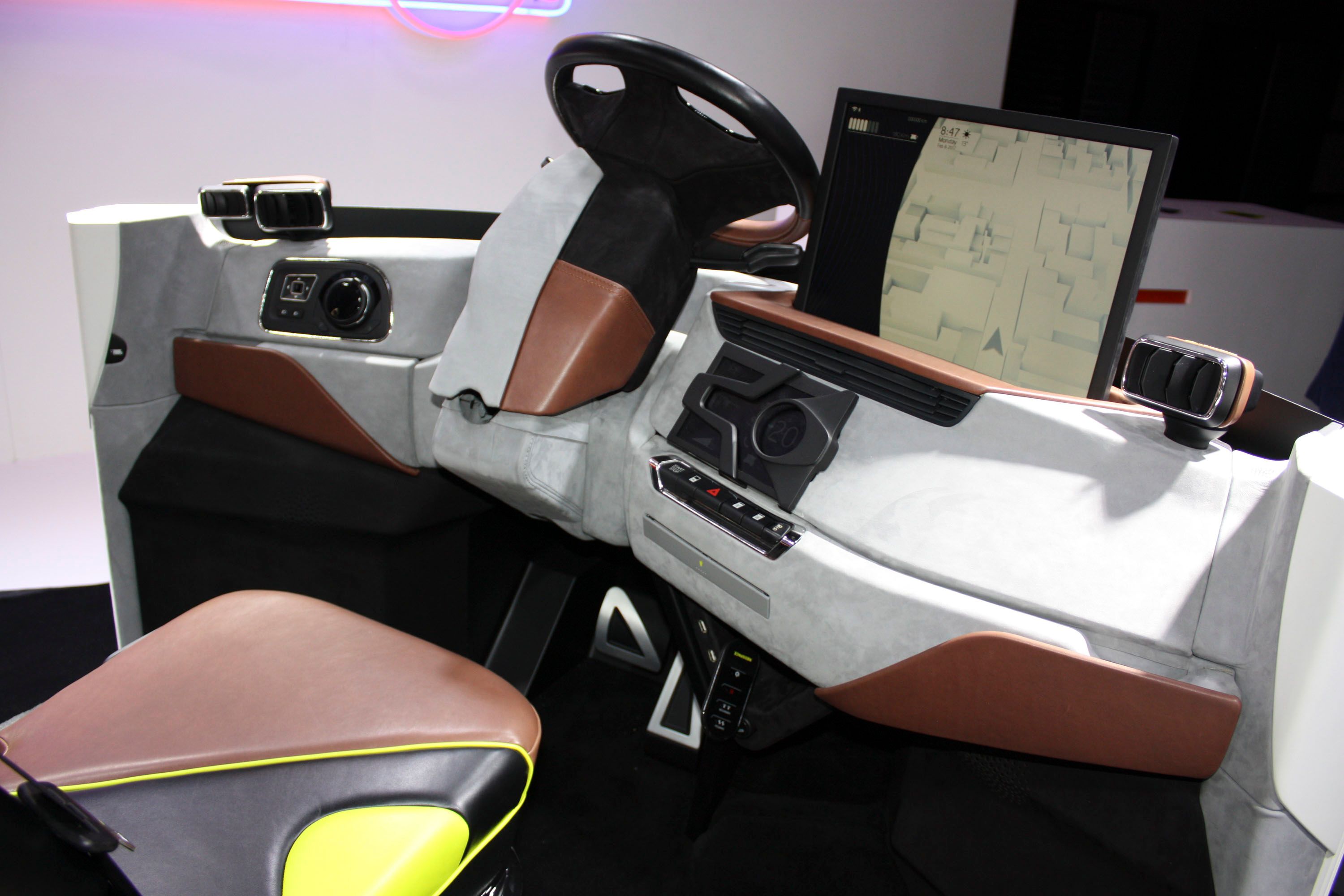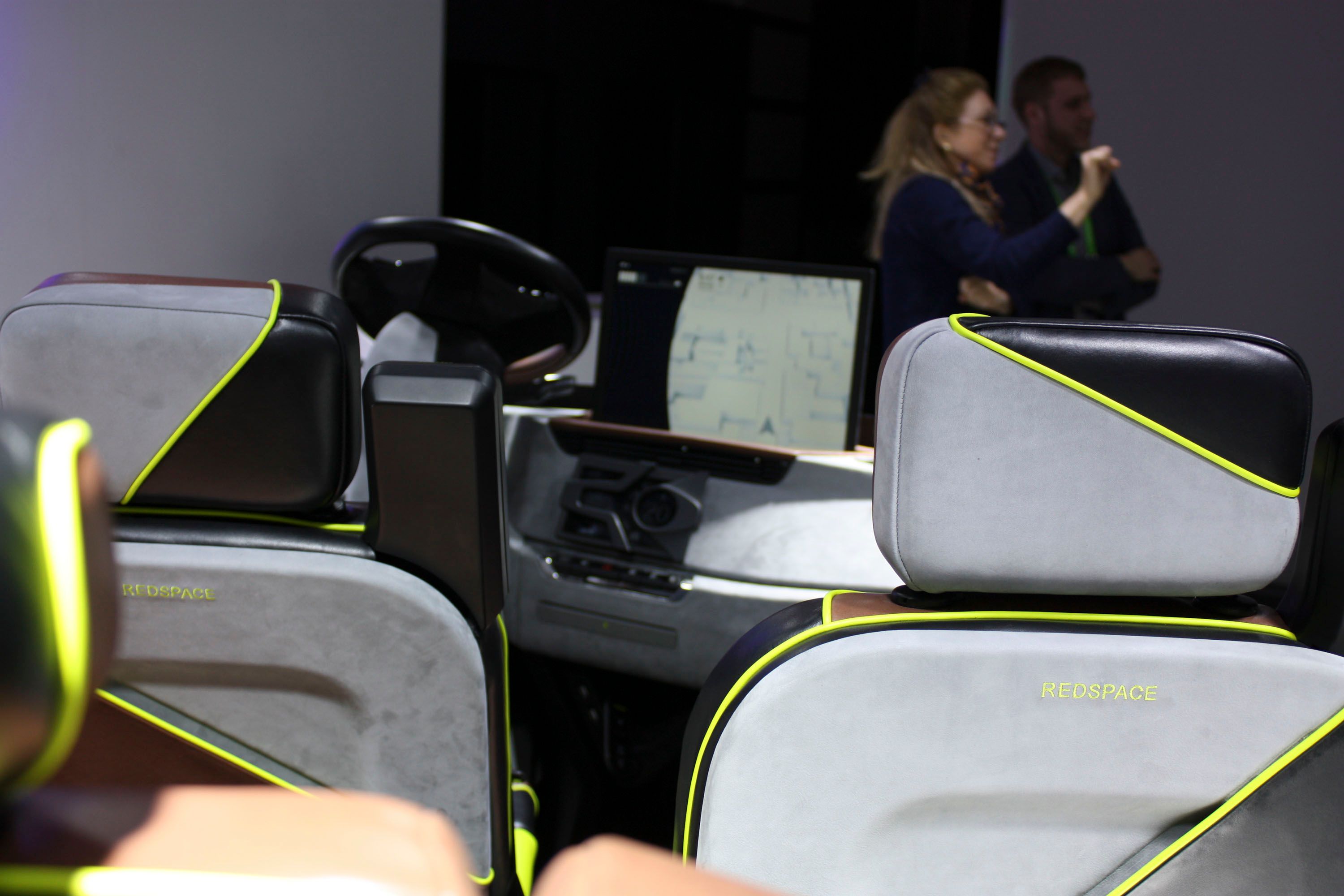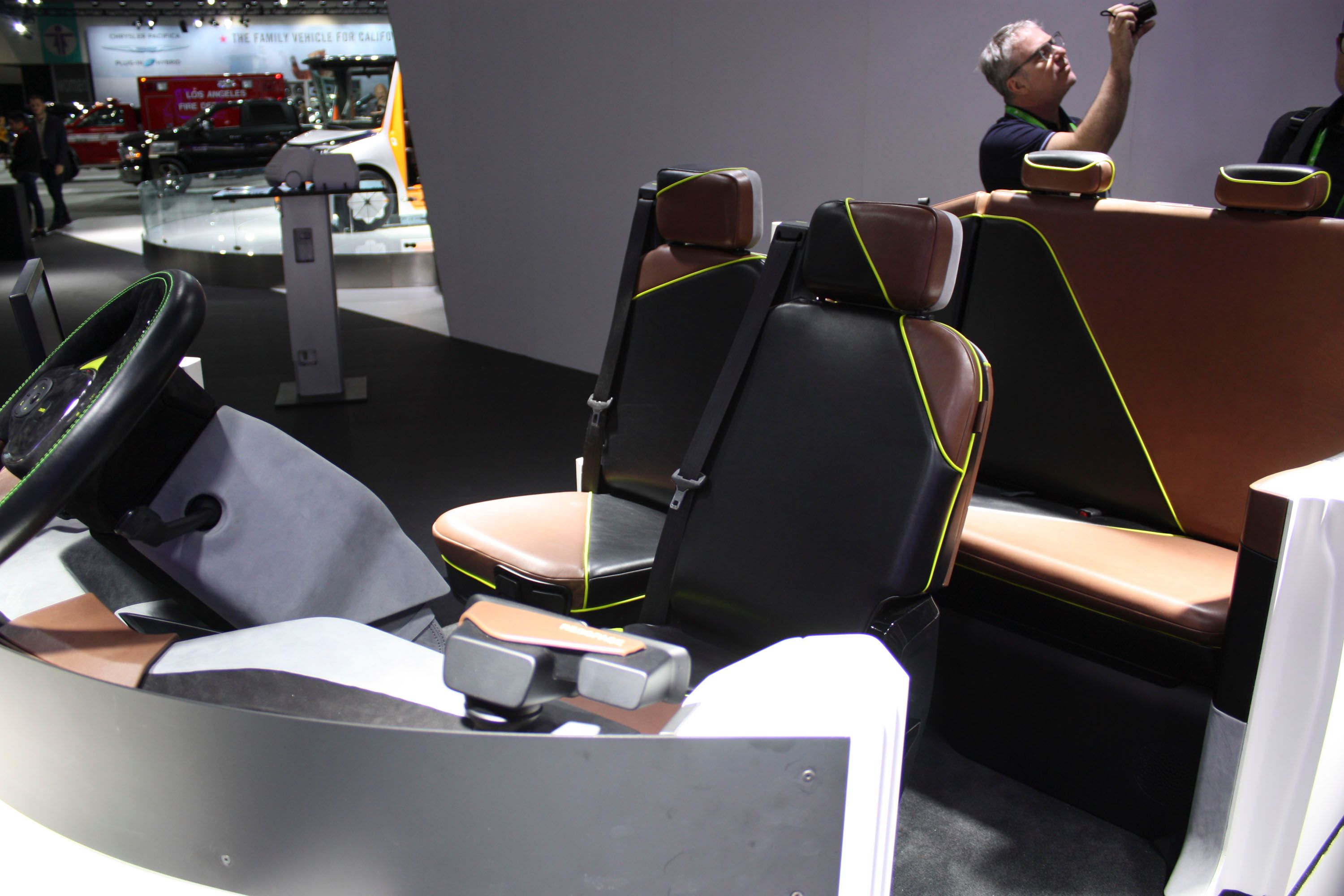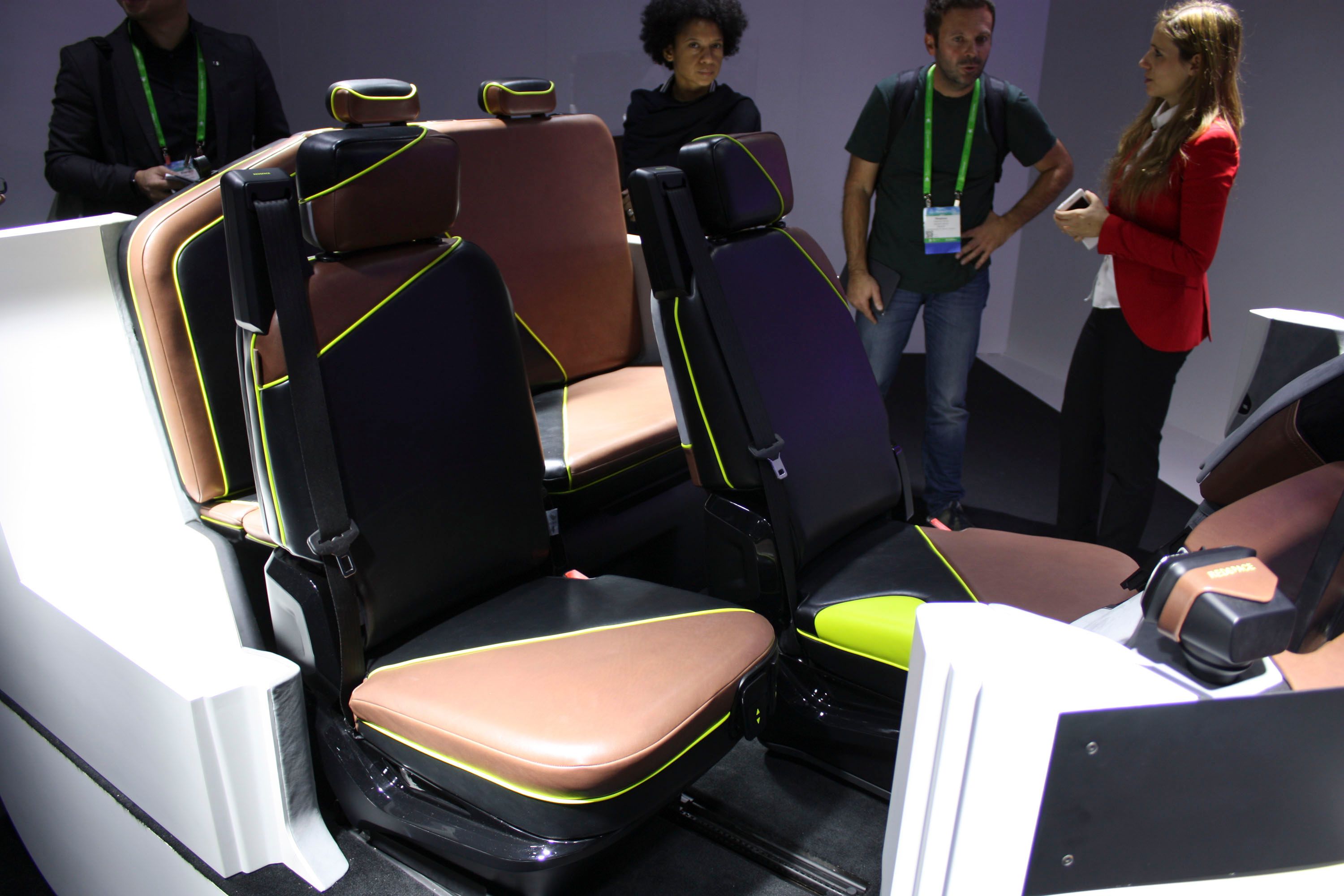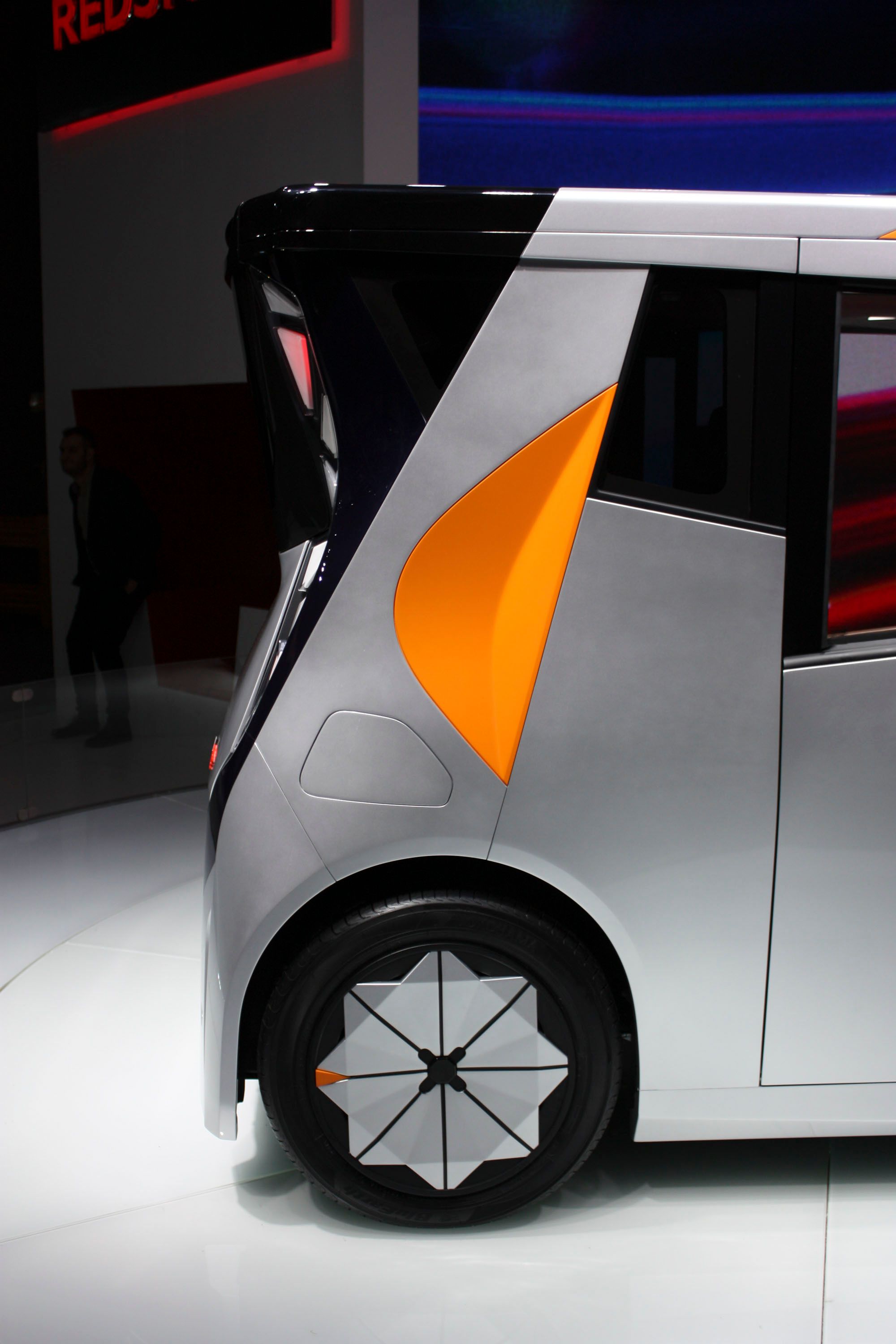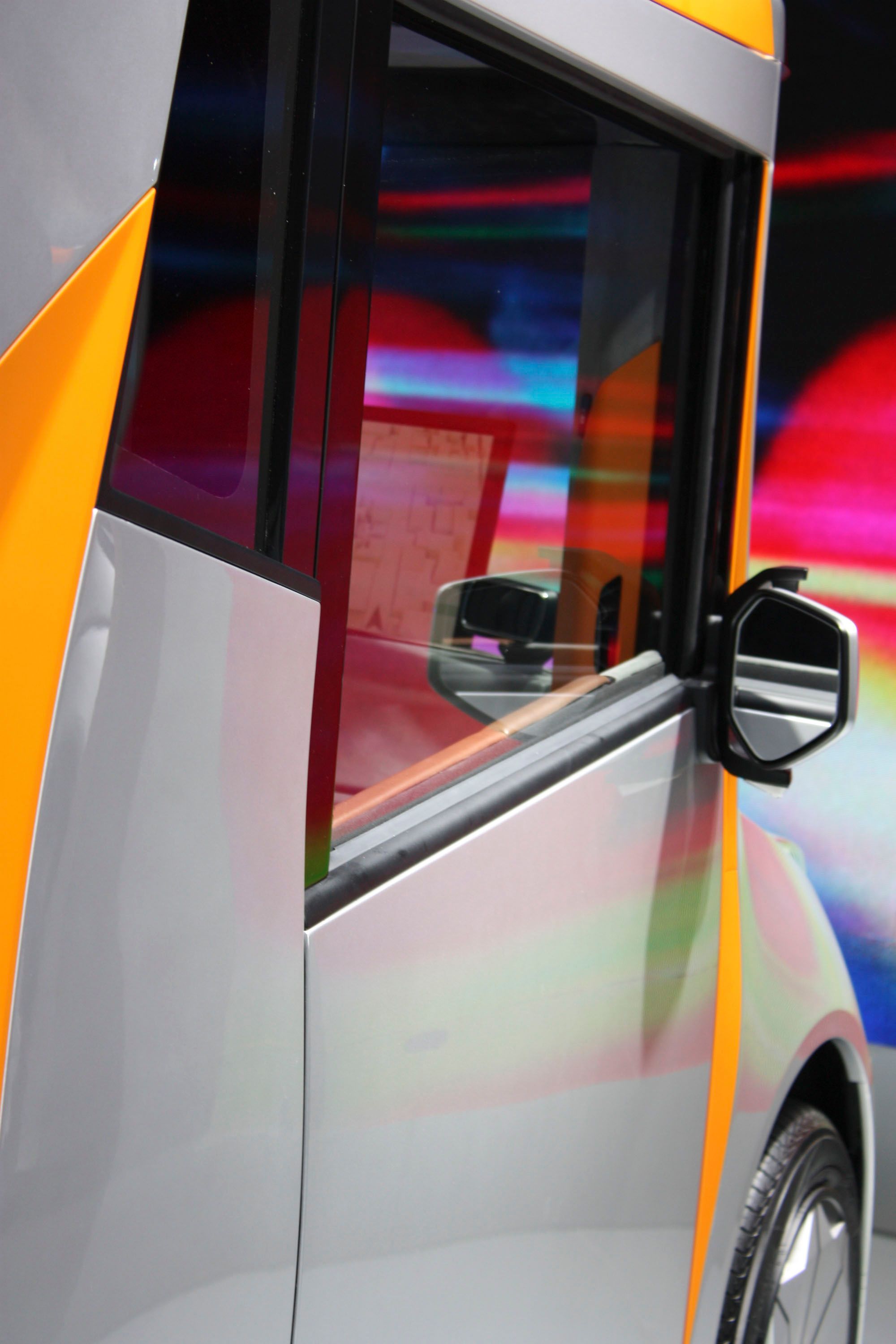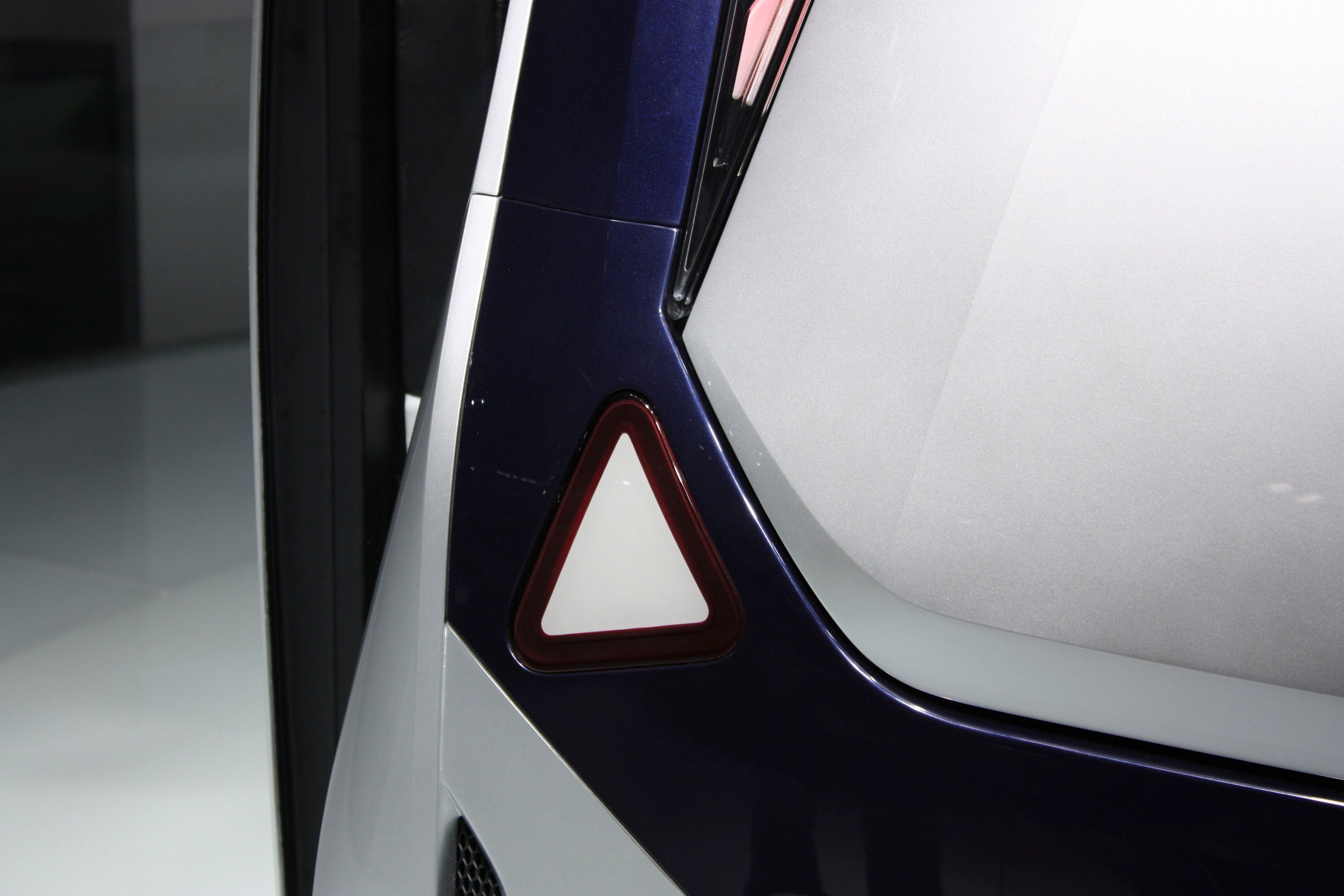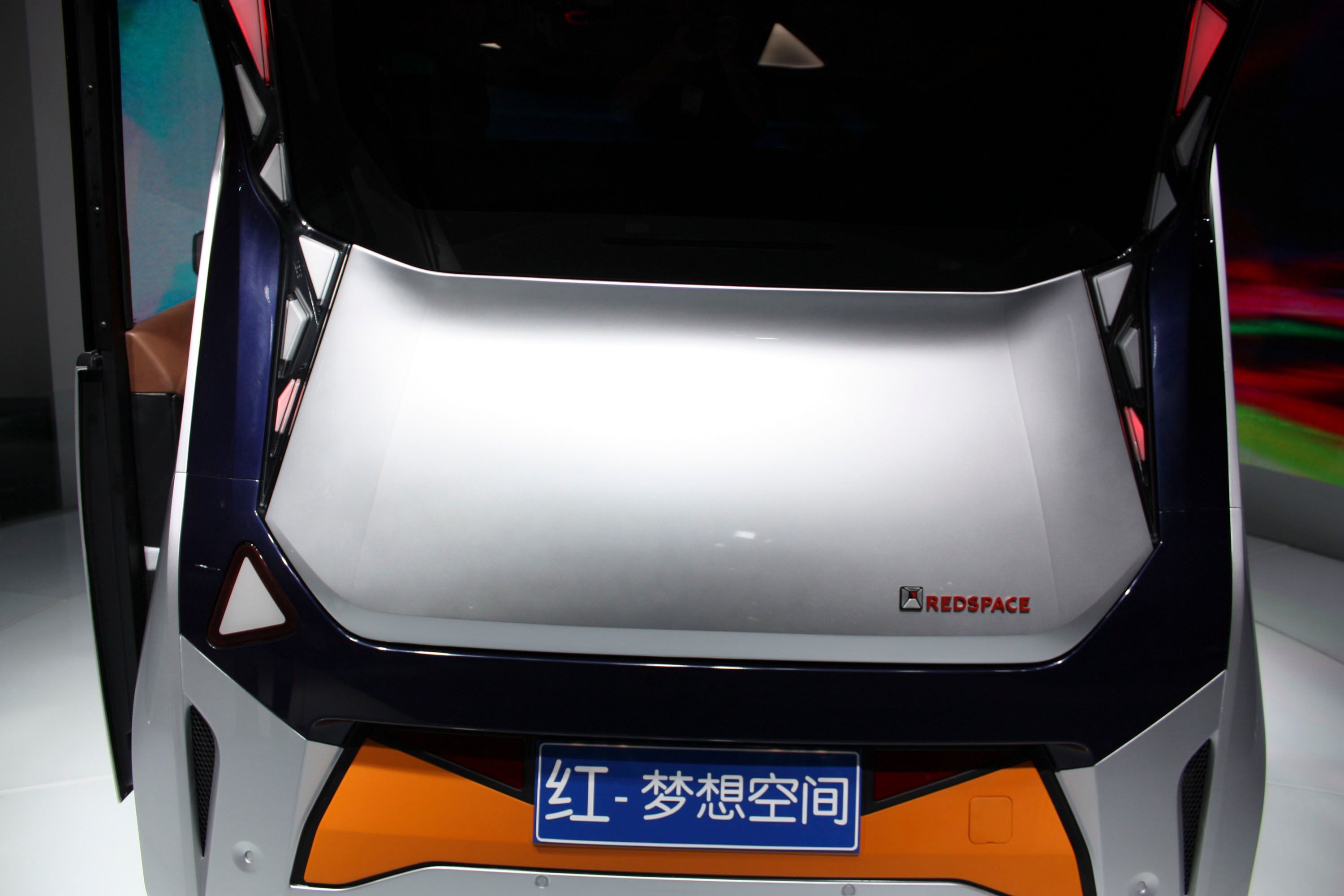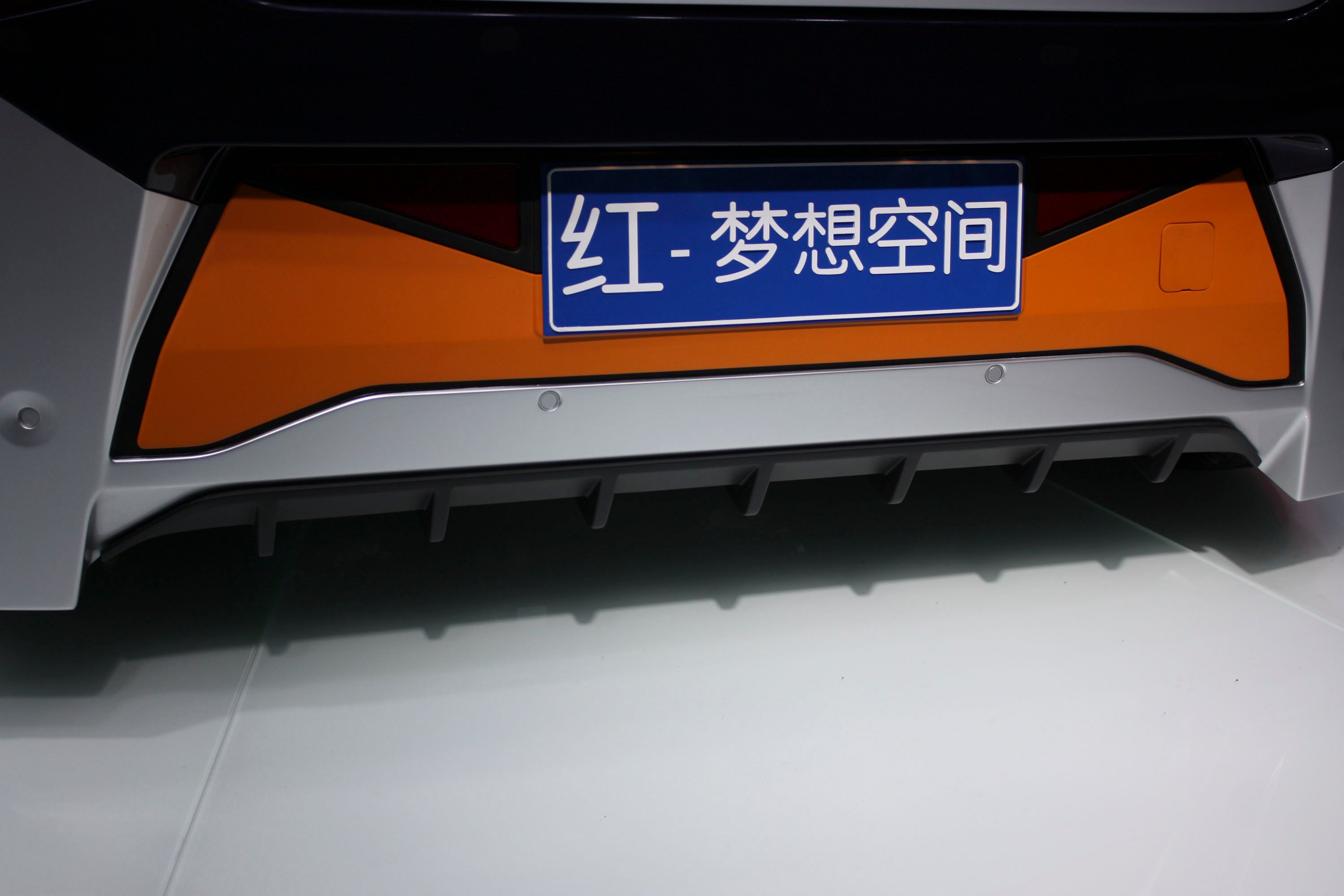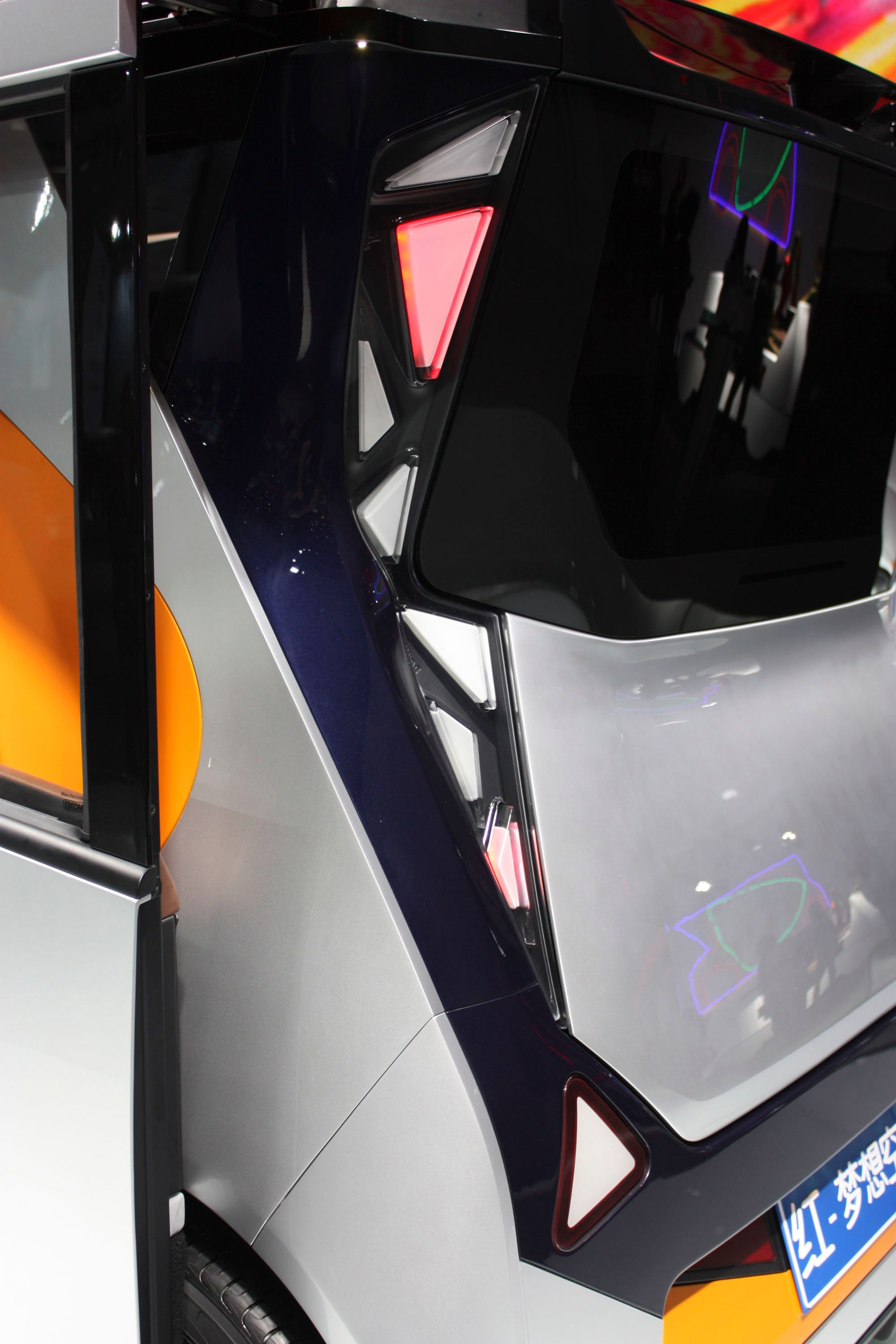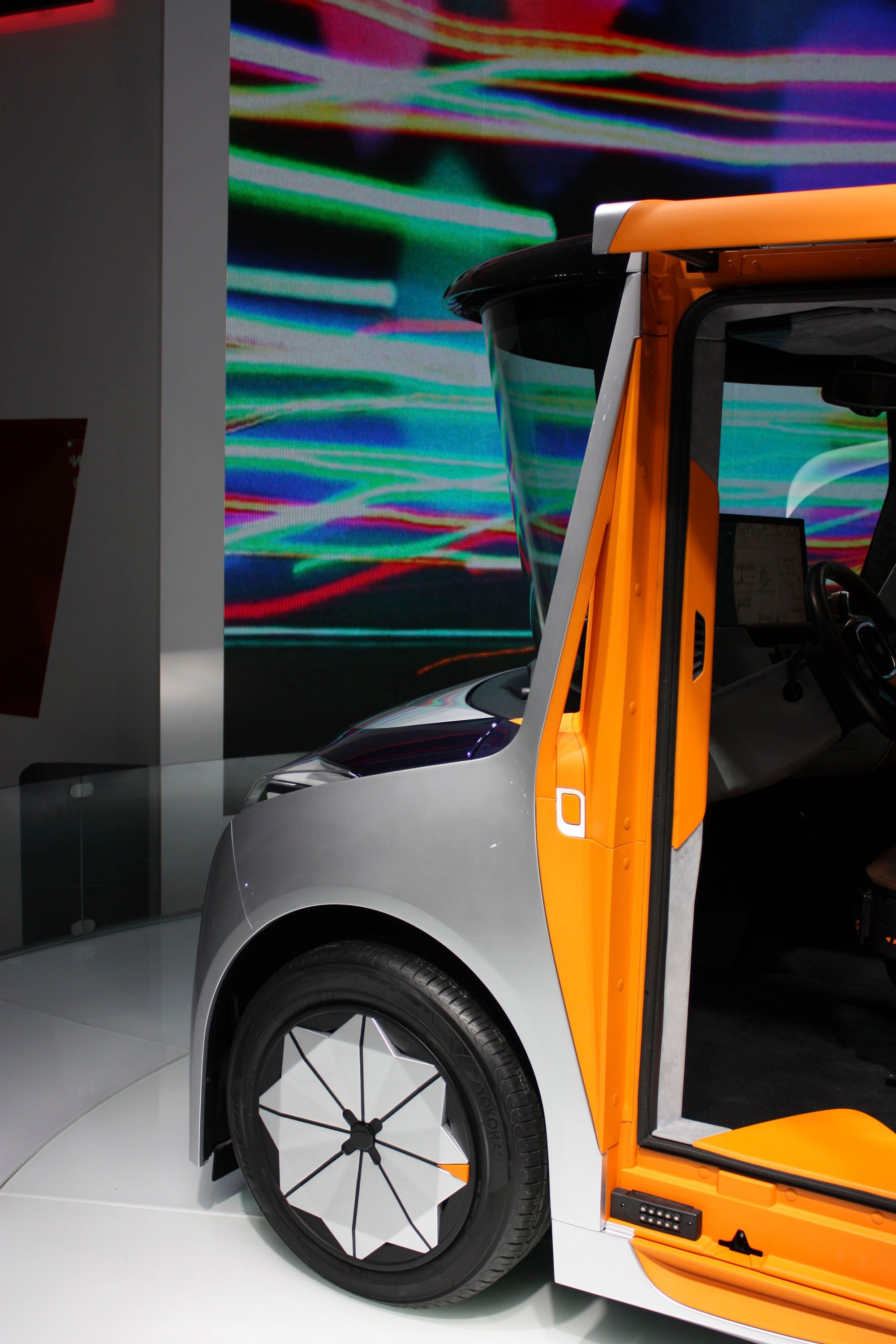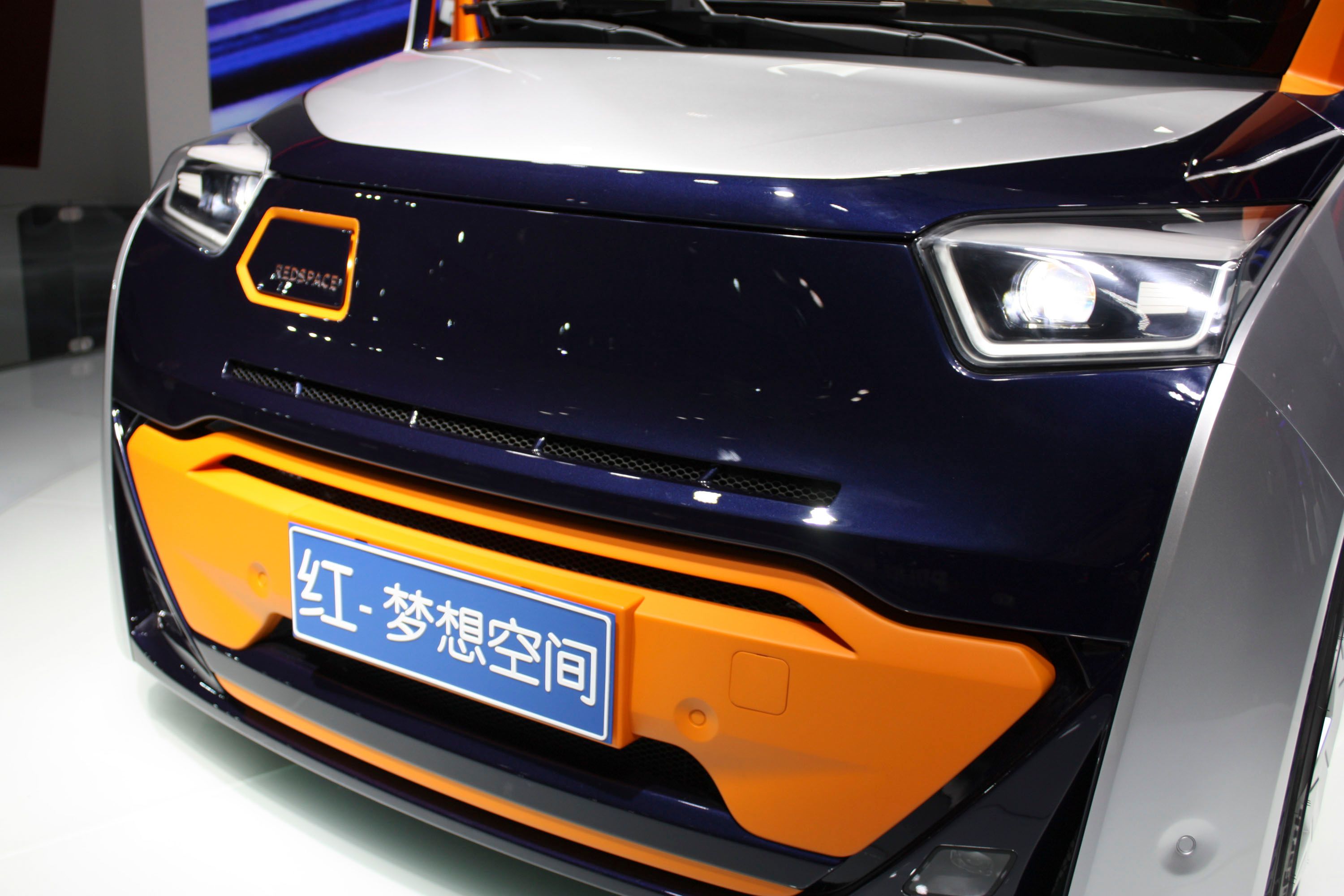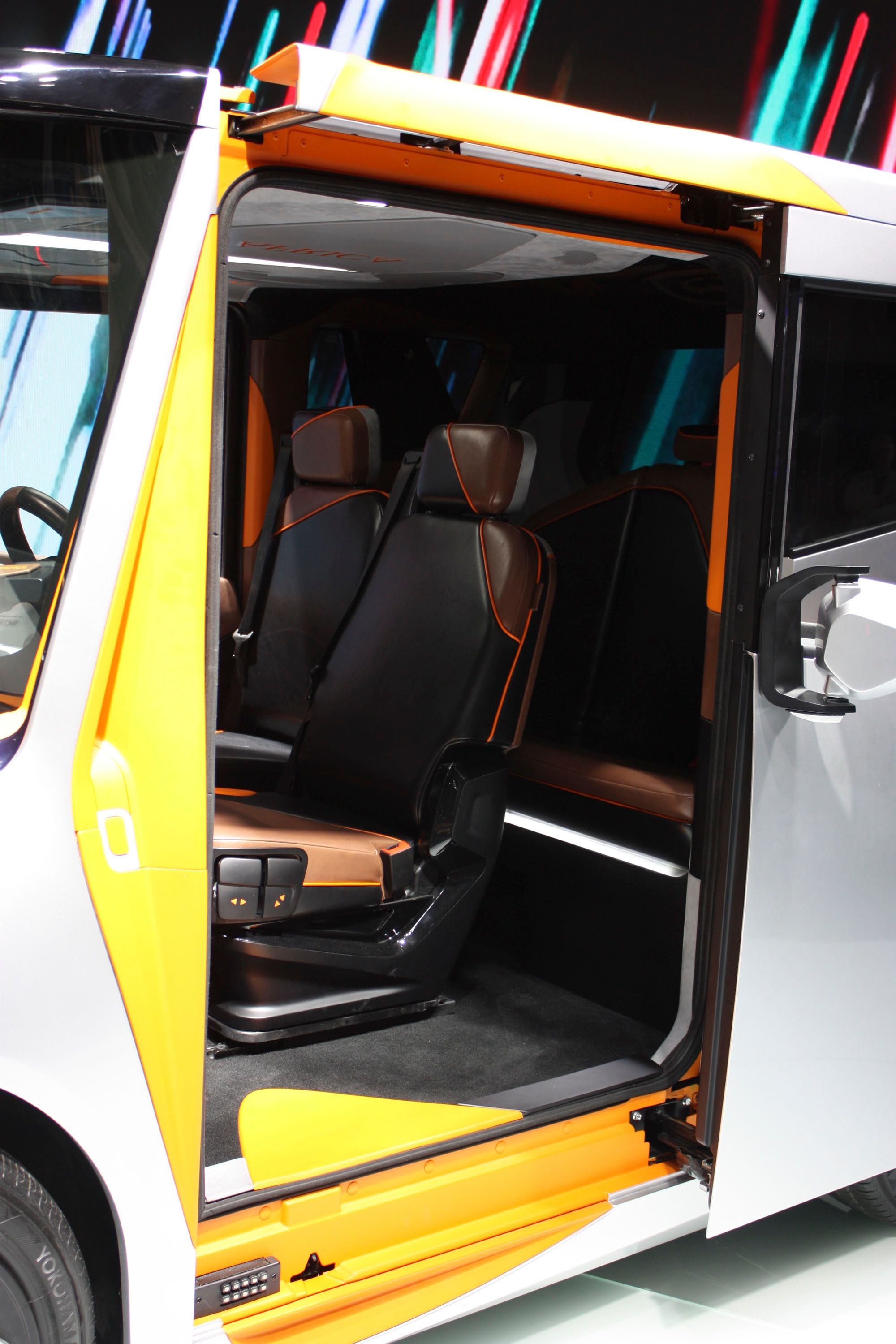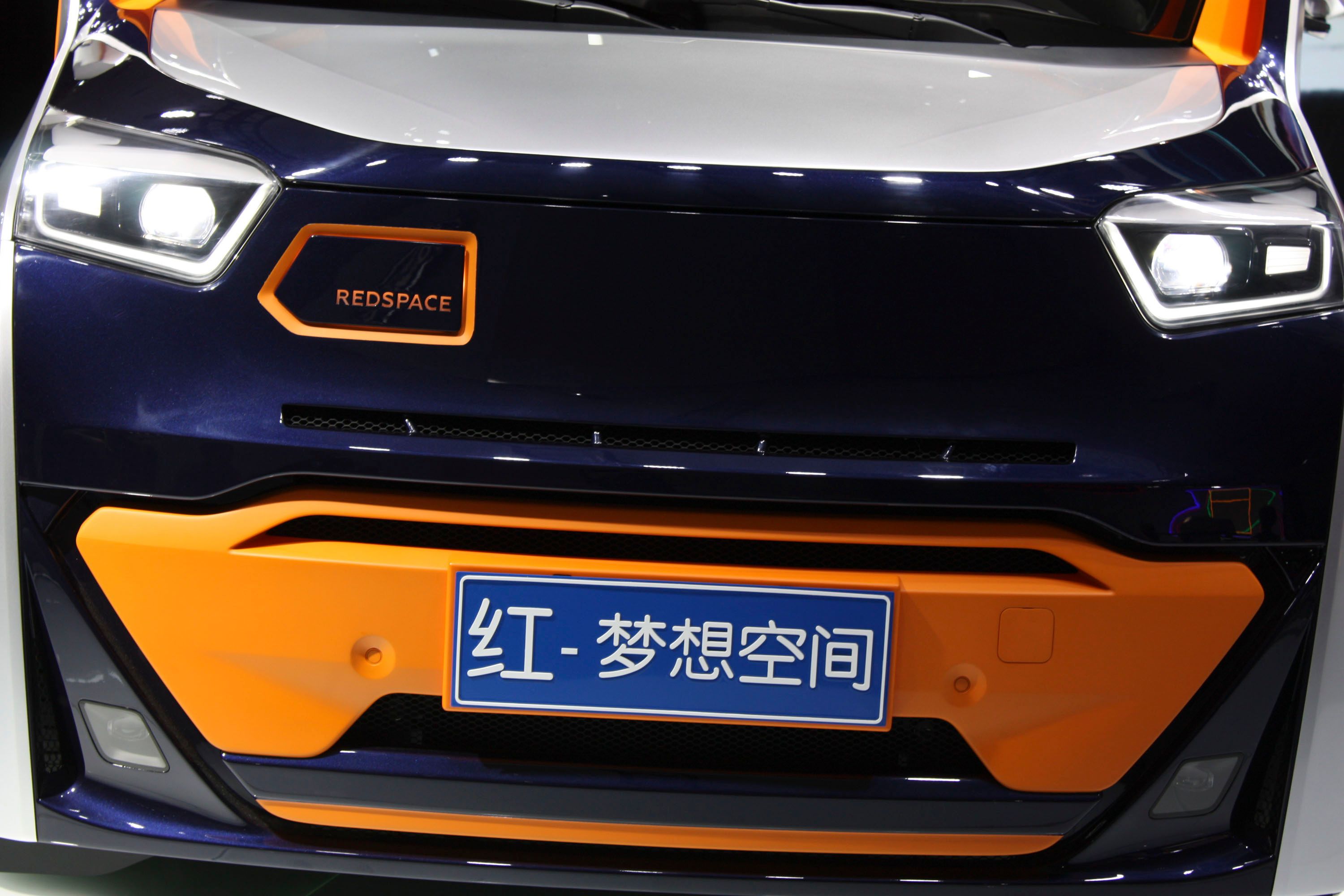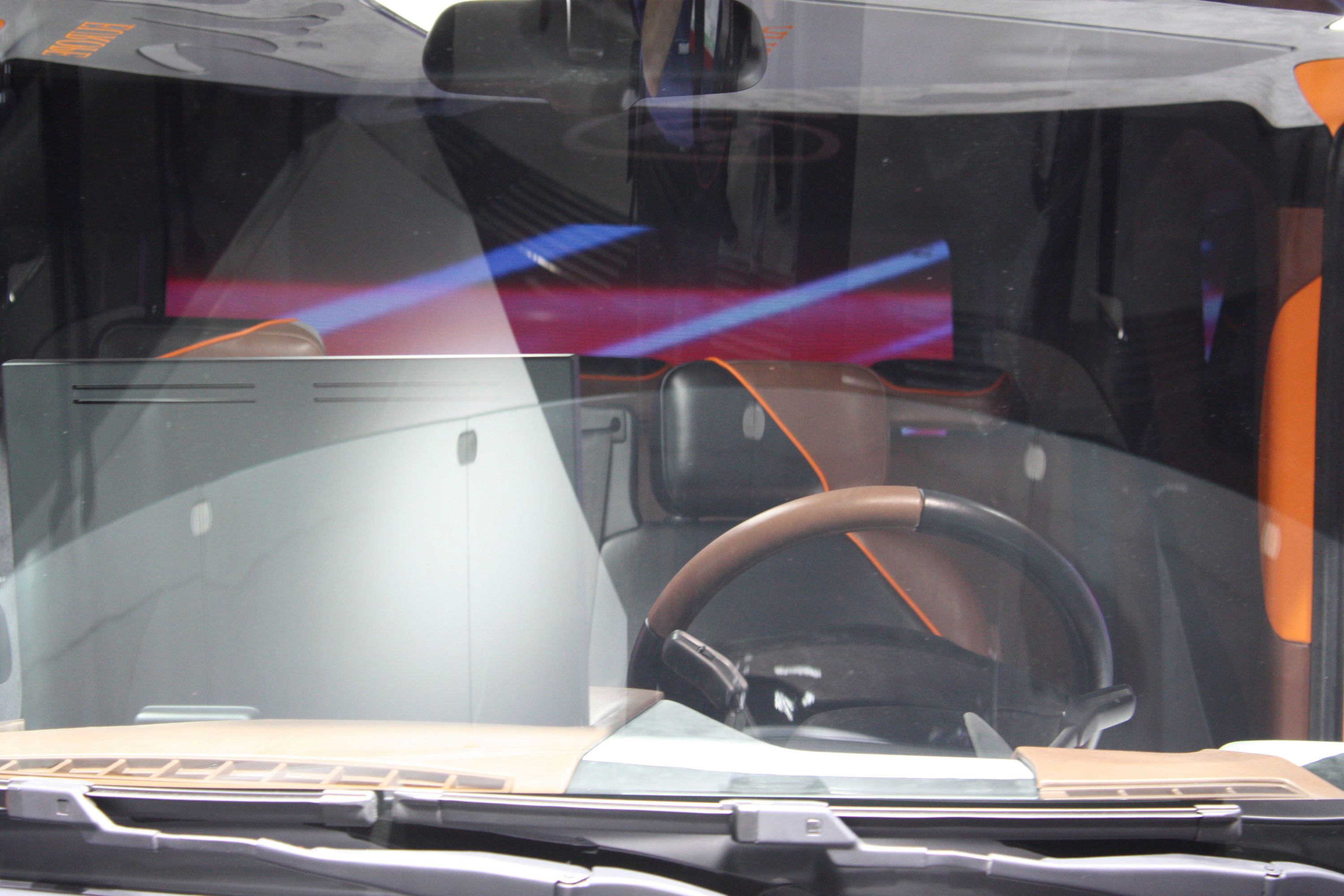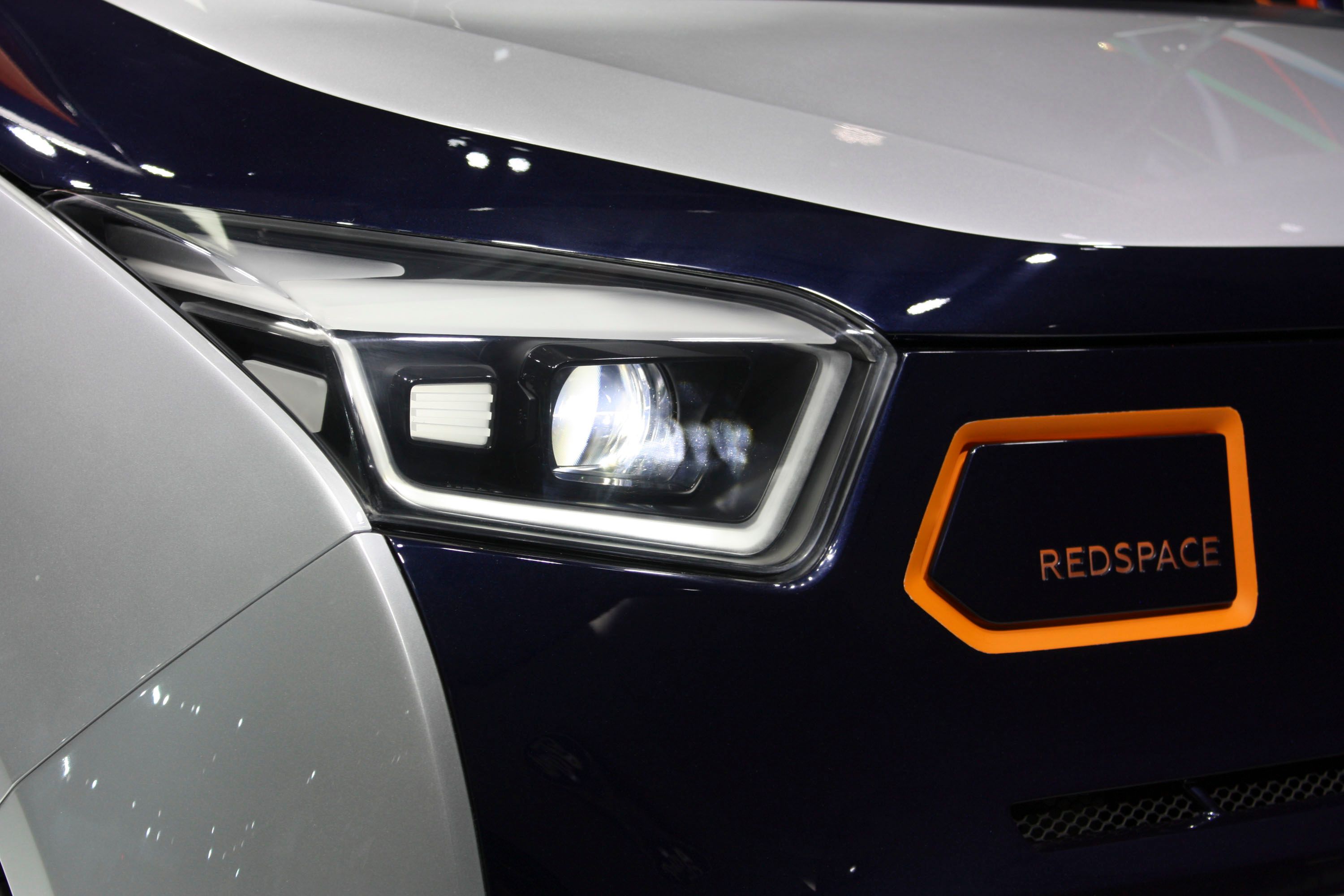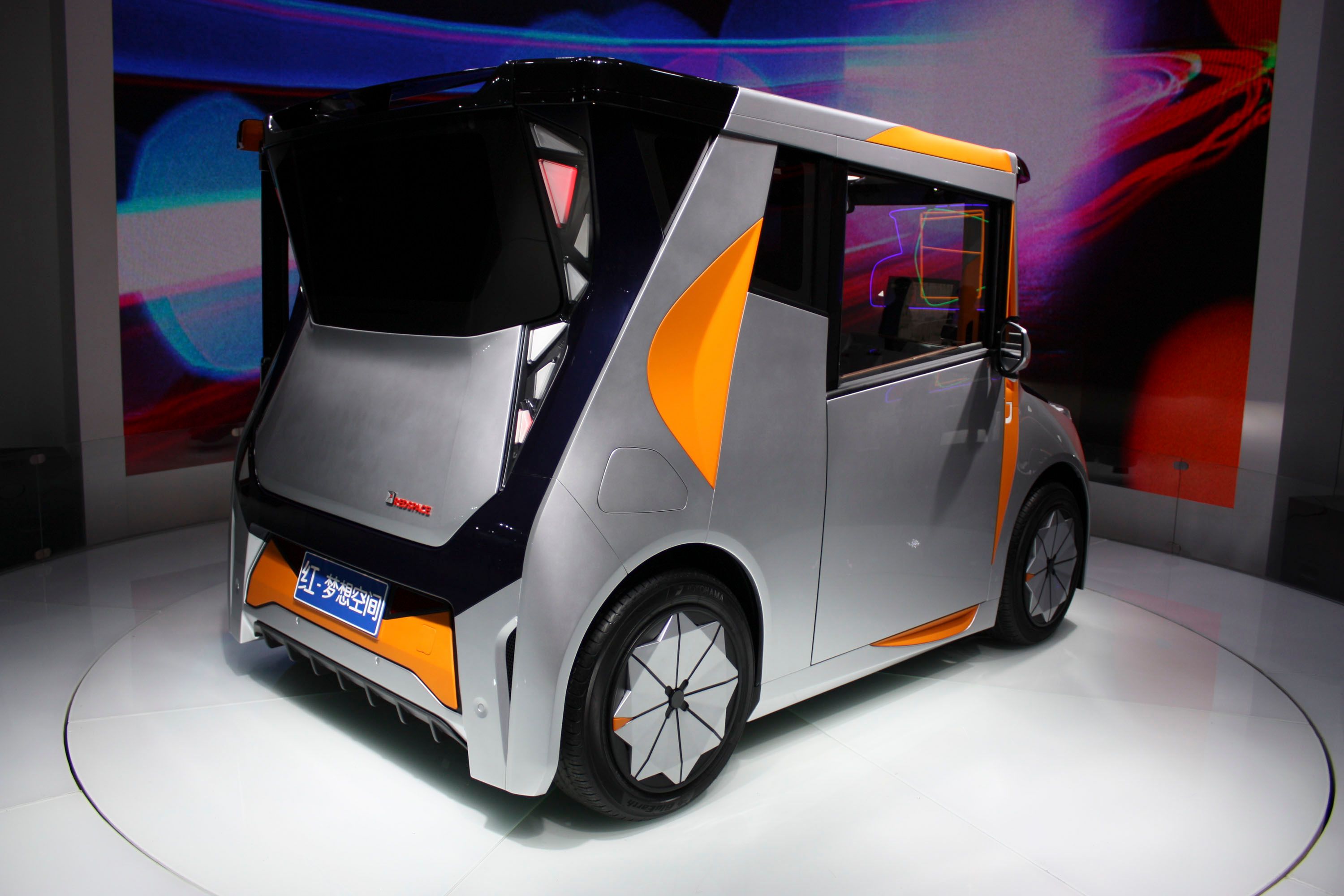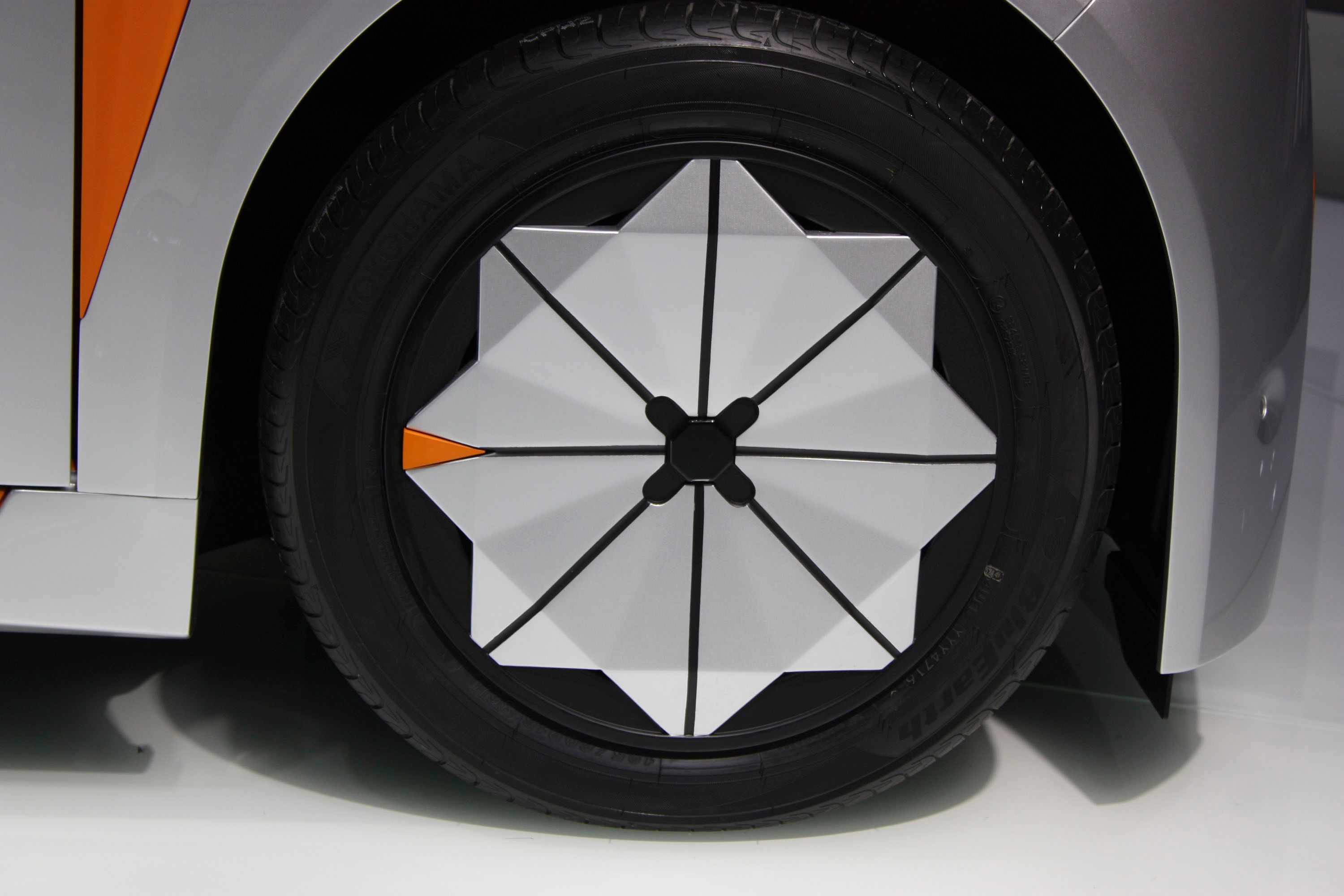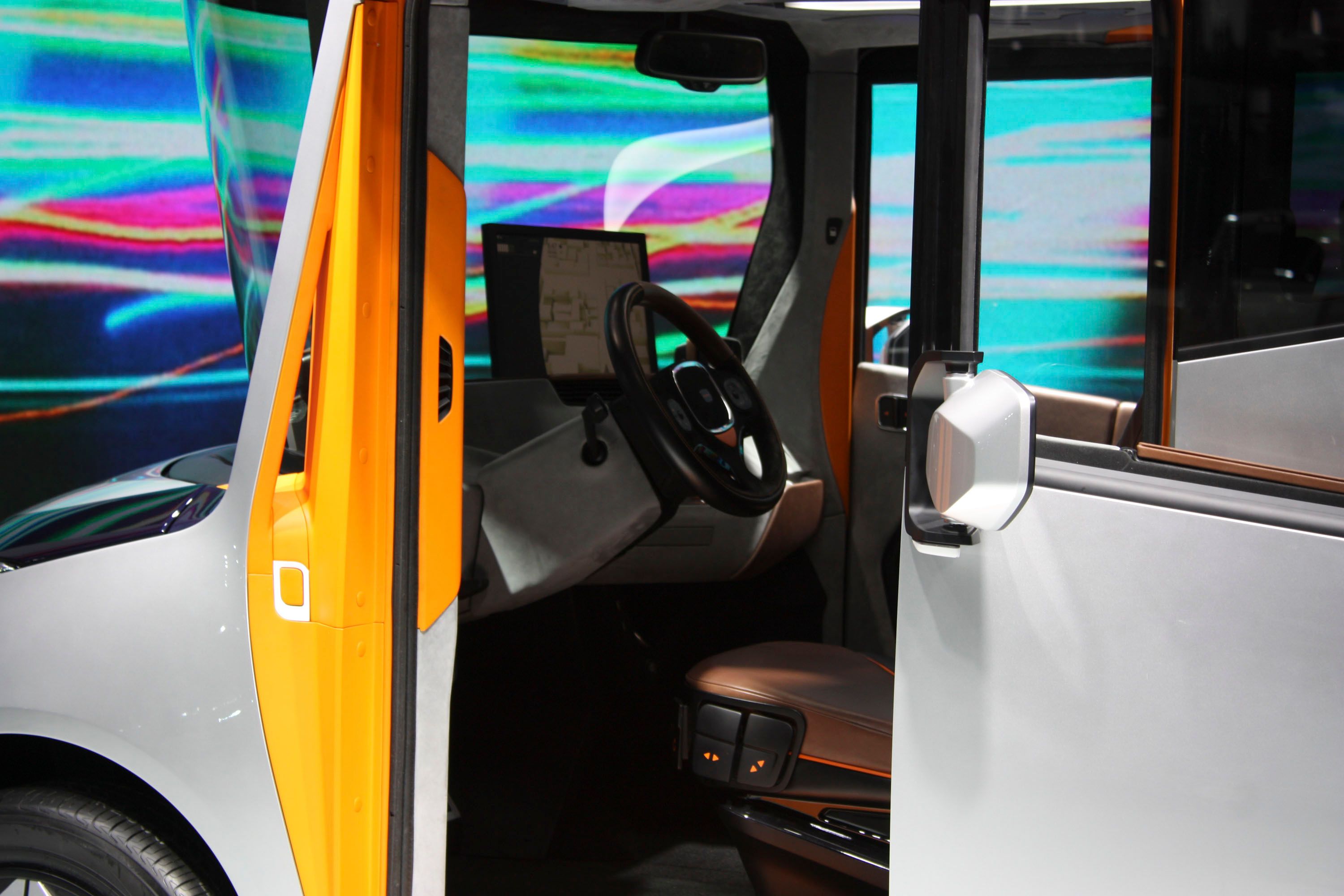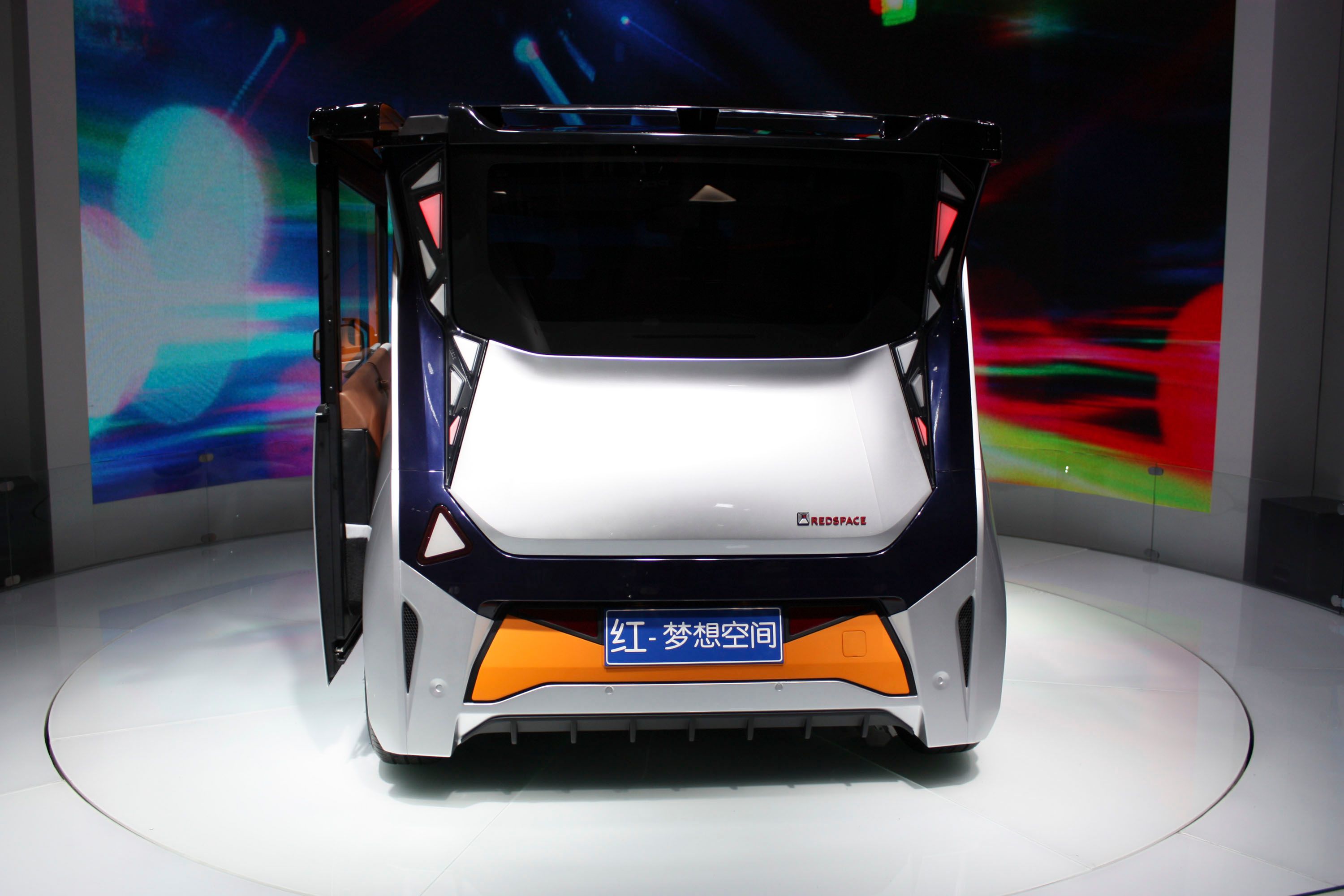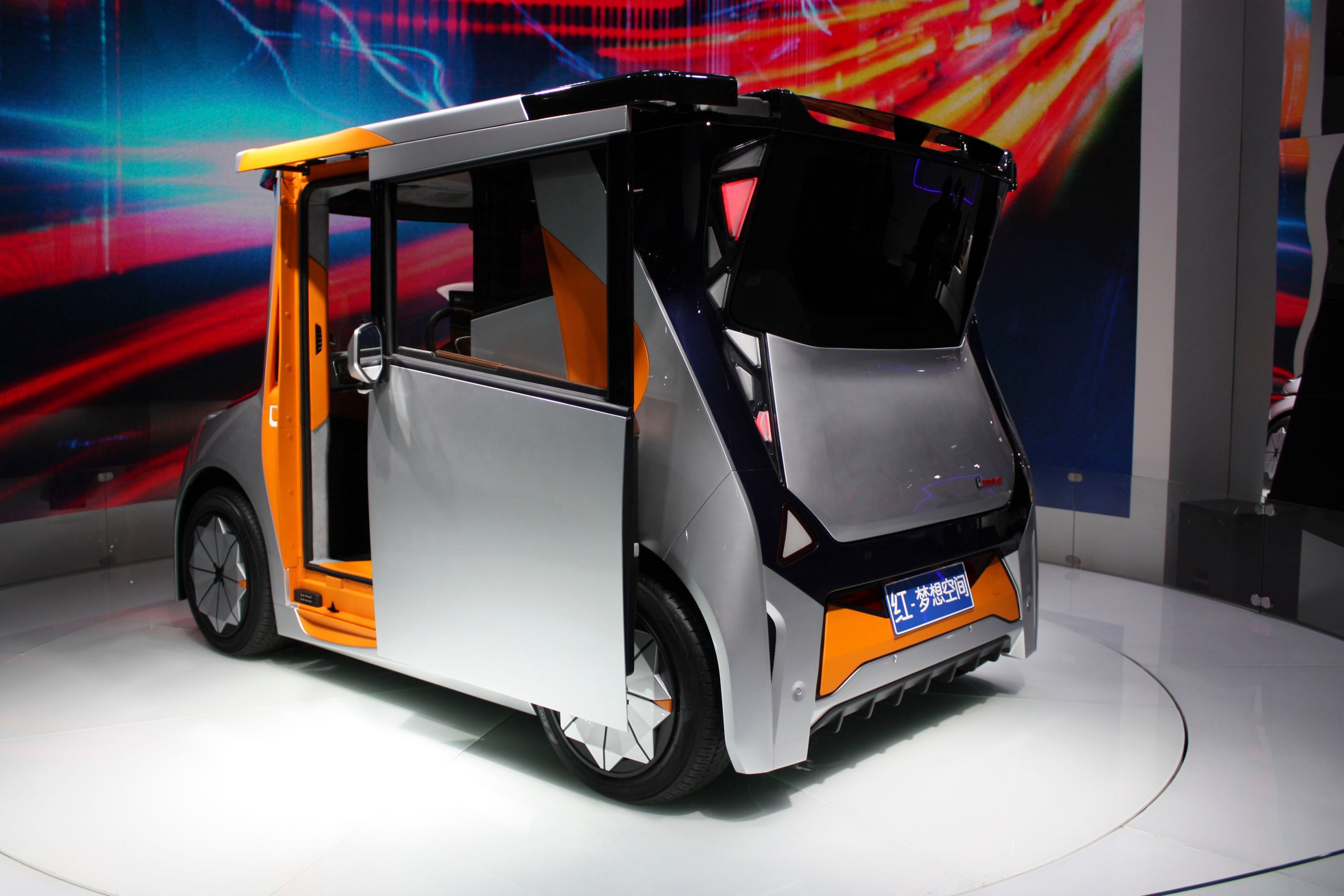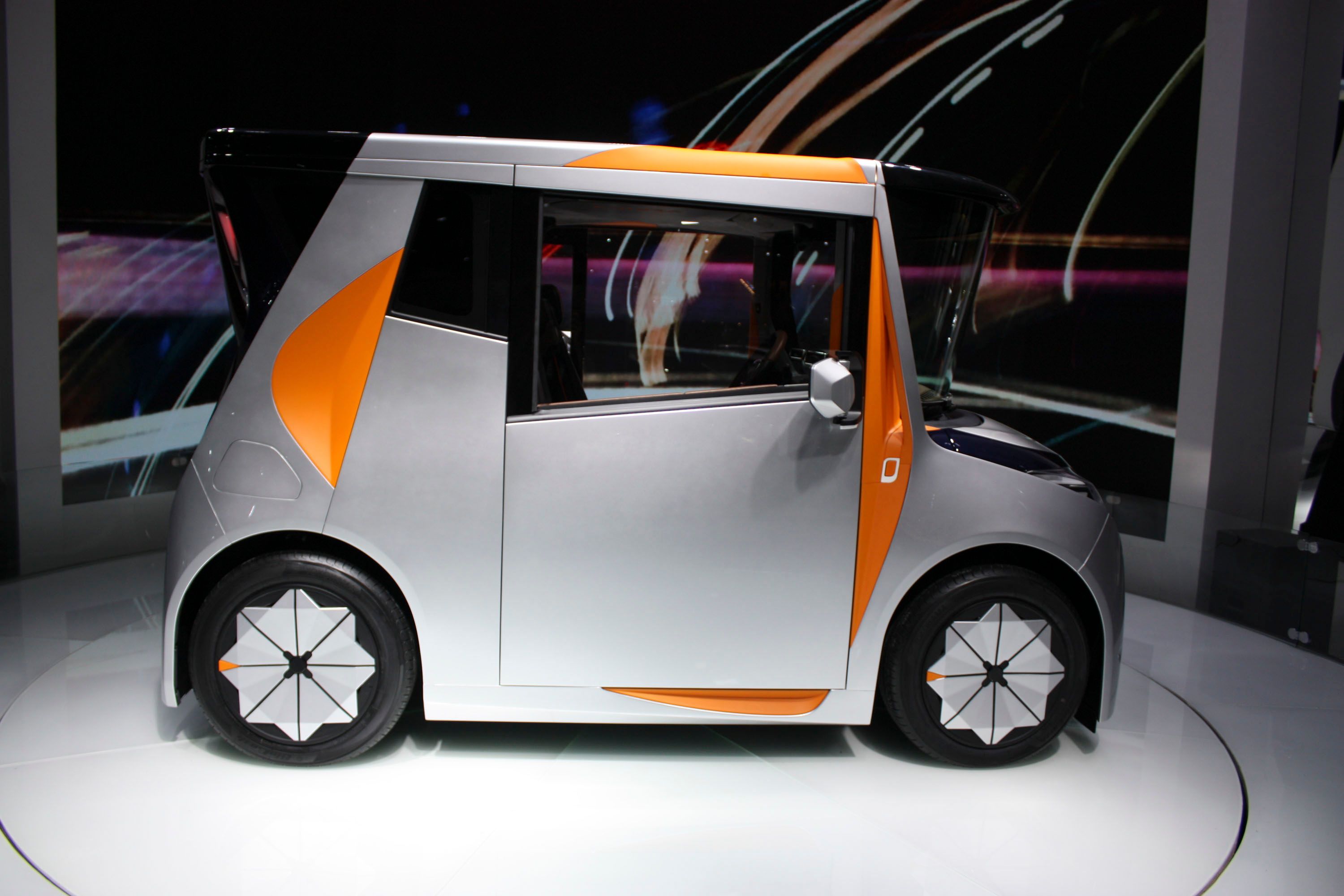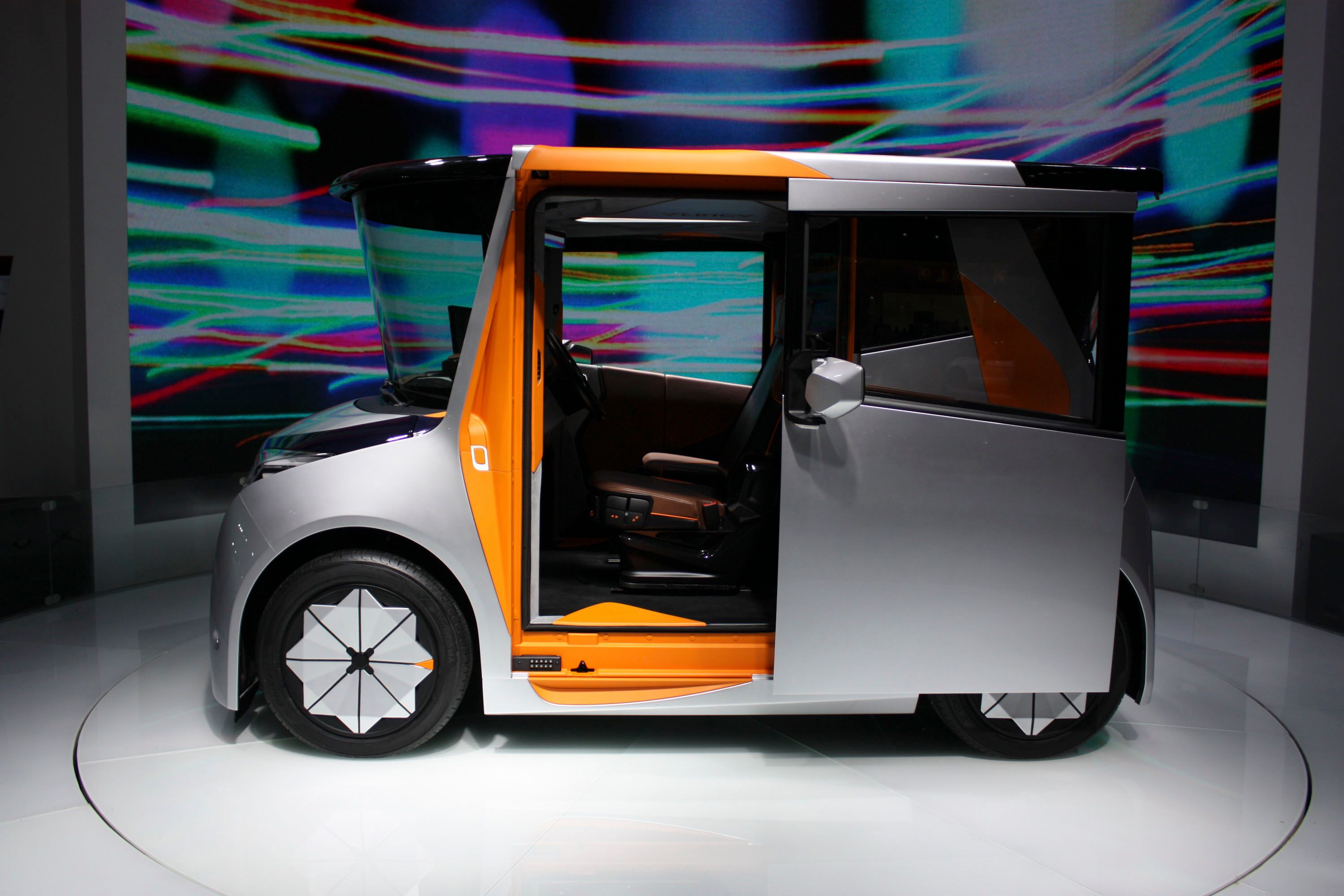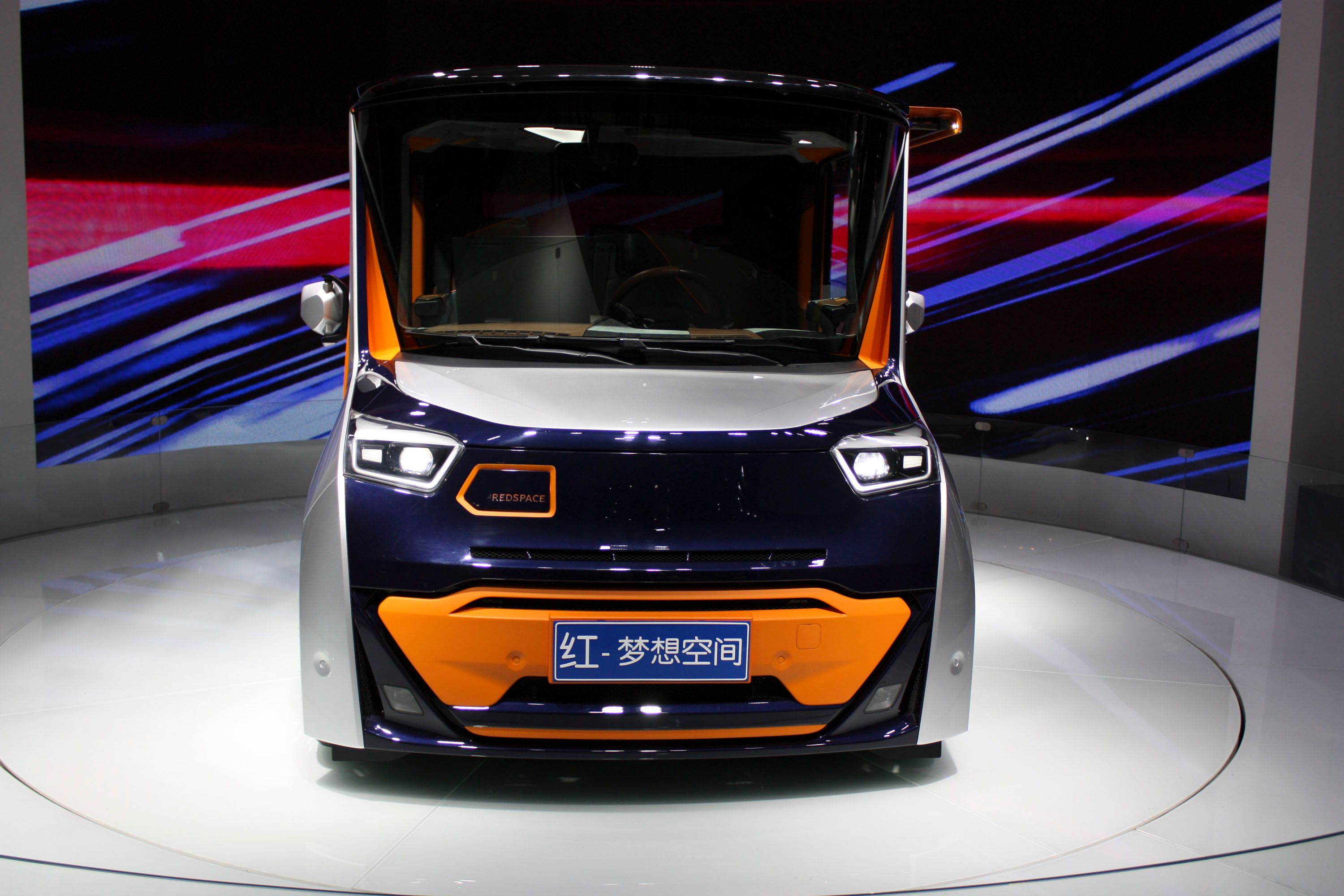The Earth is teeming with humanity. In 2011, the world population hit a head-spinning 7 billion people, and it’s only getting more crowded – at an accelerating rate, too. Most folks live in and around staggeringly dense urban centers called “megacities,” called as such thanks to population figures that eclipse the 10-million mark. With such incredible numbers of people to serve, transportation systems are at their limit. So what’s the solution? Something like Project Redspace might very well be it. Produced by a Chinese firm and aimed primarily at the Chinese market, the Project Redspace (Redspace as in “Revolutionary Electric Dream Space”) is an all-electric commuter with a unique twist. The driving philosophy behind its creation was to leverage space wherever possible, finding an ideal amalgamation between form and function through inherent adaptability and customization, all while leaving the door open for the integration of forthcoming autonomous systems. Introduced in concept form at the 2017 Los Angeles Auto Show, this very well could be the transportation solution for future U.S. city dwellers.
While the Project Redspace certainly doesn’t look like anything we’ve seen before, that’s kind of the point, or at least half of it. Spearheading the project is Chris Bangle, a noted American car designer with a resume that includes a stint at BMW and Fiat. Backed by Chinese partners from CHTC Motors (China Hi-Tech New Energy Automobile Co., Ltd), Bangle says that he managed to design “a space that decided to become a car,” and he’s deadest on meeting the needs of the traveling public of the future. While this might be a prototype model, a production iteration is reportedly just years away. Read on for the details.
Continue reading to learn more about the 2020 Project Redspace.
2020 Project Redspace
- Make: Array
- Model: 2020 Project Redspace
- [do not use] Vehicle Model: Array
Exterior
The Project Redspace is utterly unique, blending a variety of elements to create something unlike anything we’ve seen before. It’s boxy, no doubt about it, but at the same time its got tons of curves and angles, marked by pointed elements added just about everywhere, thus breaking up the lunchbox-style form underneath with additional organic bits. The details on this thing are plentiful, to say the least. Bangle says part of the design takes inspiration from what a little kid would trace when asked to draw car – a bold move, to say the least.
Taking responsibility for the form is a multinational design team that includes folks from Germany, Japan, America, France, and Italy, which might help to explain the Project Redspace’s rather hodge-podge look. Bangle calls it an “interactive” design language.
In front, we find a short, blocky nose, with rounded curves and angular headlights drawn into the corners. An organic-looking front bumper block breaks up the form, while the windshield rises up and outwards into a perfectly flat roof, curving around like half of a martini glass. The headlights appear to offer LED lighting elements, with signature surrounds. The overhangs are very short, both front and back. A small geometric Redspace badge resides in the left-hand portion of the fascia.
Moving to the sides, the Redspace’s unique front-leaning wraparound windshield becomes more obvious, offset by a rear-leaning pillar structure to give a sort of vee-shape. While unique in terms of styling, the automaker says the design is also quite functional, as it opens up the interior space while simultaneously allowing for more efficient airflow outside. The top overhang also helps create a shadow, thus keeping temperatures inside down.
In the corners, we see an adequately funky wheel design, like the pedals of some kind of mechanical flower. Aiding ingress and egress is a pair of horizontally sliding doors, with a function similar to what you might find on a van, which is particularly useful when squeezing through tight spots. The sliding design also means the car offers a bit of a roof as you climb into the vehicle, which, as the automaker points out, should keep you dry when entering or exiting the car in inclement weather.
As you might expect, all those crazy exterior details open up a plethora of opportunities when it comes to customization, and the automaker is quick to boast about the huge range of styling options customers will have in making it their own.
Finally, the Project Redspace comes with very small exterior dimensions, a vital characteristic for city driving. We’ll let you know the final measurements when the production version arrives, but for now, we hear it’s roughly 20 inches shorter than a Fiat 500 and just a tad bigger than a Smart Fortwo.
Interior
Interestingly, Project Redspace actually began its life as an interior. The designers started by modeling the cabin space, so as you can imagine, a lot of time and effort went into making it as effective as possible. The overarching goal was to comfortably seat four adult passengers, while also offering a huge amount of customizability to fulfill a broad range of needs, whether its playing video games, changing a diaper, or finishing a business report. Bangle says it’s supposed to be an area large enough to “live my life in,” like a mobile apartment.
To kick it off, the individual seats can swivel 180 degrees, facing forward while driving, or facing one another when the car isn’t in motion. Alternatively, the seats can be rearranged into a totally new configuration, placed in offset to make more room for arms and legs. The armrests slope upwards for easier driving.
On the dash, the most obvious feature is the enormous 17-inch infotainment screen on top of the dash. There’s also a lower touchscreen located near the driver to provide a means for user inputs. This lower screen gets a plastic cover with a tactile feel to it, which is intended to offer easier the driver operation without requiring them to take their eyes off the road. There’s also a fold-down desk, in case you need a spot to sign papers or rest your mobile device. Onboard Wi-Fi should be standard.
Further tech features include automatic braking and parking assistance. And considering the amount of time that went into making the Redspace interior a great spot to relax, the car is obviously perfectly suited for high levels of autonomy, a facet the company is sure to jump on as soon as the technology hits the right inflection point in terms of cost and efficacy.
Drivetrain
Per tradition for a forward-thinking city machine, the Project Redspace gets all-electric motivation. Details on the car’s powertrain are understandably still under wraps, but we do know the electric motor is mounted in the rear, which means its RWD. The batteries are also mounted underneath the floor, while aluminum was used for the construction to keep it as lightweight as possible. The automaker also says it’ll offer the range of a “large four-seater car,” so we’re hoping for at least 150 miles. 200 miles would be ideal.
Once again though, the details are what make Project Redspace interesting. For example, the roof is a solar panel, which is wired to the peripherals (HVAC, stereo, infotainment, etc.) to keep the battery pack topped off on sunny days. And it’s got a big roof too, which means a big solar panel. Apparently, it’ll have the option for inductive charging as well, a feature that will be offered at launch.
Prices
While the Project Redspace is designed specifically for the Chinese market, there’s a possibility it could see an introduction in other markets as well, including in the U.S.
Impressively, Redspace says it could have this thing on the road in the next two years, which seems rather ambitious, if you ask us.
No pricing has been announced, but if we were to guess, all those premium features and customizability and advanced technologies won’t come cheap. As such, we wouldn’t be surprised to see it tagged at $45,000, similar to the BMW i3. And speaking of which…
Competition
BMW i3
Interestingly, our first competitor comes from Bangle’s former employer, BMW. Like the Project Redspace, the BMW i3 is a high-end all-electric box, made from aluminum and carbon fiber to keep weight as low as possible. Inside, the materials are quite nice, while seating for four provides a decent amount of space. In the tail, you’ll find an electric motor in place to drive the rear wheels. Range per charge is around 100 miles, but if you need more, there’s the option for a gasoline “range extender” internal combustion engine for a little more outlay.
Read our full review on the 2018 BMW i3.
Smart Fortwo Electric Drive
The Smart Fortwo focuses much more on catering to urban environments than the BMW i3, with tiny exterior dimensions and a tiny turning circle as well. This thing was made for squeezing through cramped spaces, which is great, but the interior space suffers as a result, only offering seating for two passengers max. Range is also a bit on the low side, with just 75 miles offered between plug-ins. The price, however, is far below that of the Bimmer and what we’re speculating for the Project Redspace, slotting in under the $25,000 mark.
Read our full review on the 2017 Smart Fortwo Electric Drive
Conclusion
Redspace says cars spend the vast majority of the time (up to 90 percent in fact) just being idle. And therein lies the designer’s idea of what could be done to increase efficiency on a variety of levels. In terms of time, the car was designed to be a mobile workspace and lounge thanks to its modular interior layout. Thanks to the electric motivation and potential autonomous technology, the car should be efficient with the energy reserves as well.
It makes sense this thing was designed by a Chinese firm. After all, few countries have as many megacities as China, and demand for personal transportation solutions will only increase. The automaker says the target demographic includes “young people who just want a place to be with their friends on their own in a car that they have fun with, and at the same time, the mom, the woman who needs a second car in the family.” Then there are the folks who will use it as a “business tool.” All told, the Project Redspace is meant to appeal to a wide variety of folks in the newly emerging, hyper-crowded megacity landscape.
And that’s a rather tall order, hence the good deal of experimentation that went into the vehicle’s creation. The novel design approach is also pretty interesting, with an inside-out look at making the car work.
If the Project Redspace really does become a reality, the biggest hurdle we see to its success is price. There’s a lot going on here, and making it function properly in the real world will be complicated, which means by the time it reaches consumers, it could be quite out of reach for the target buyers.
However, if autonomous tech really takes off in the next few years, and Project Redspace adopts a “sharing” business model to help bring down the price, it could be quite successful as well.
We’ll just have to wait and see what happens.
References
Read more 2017 Los Angeles Auto Show news.

